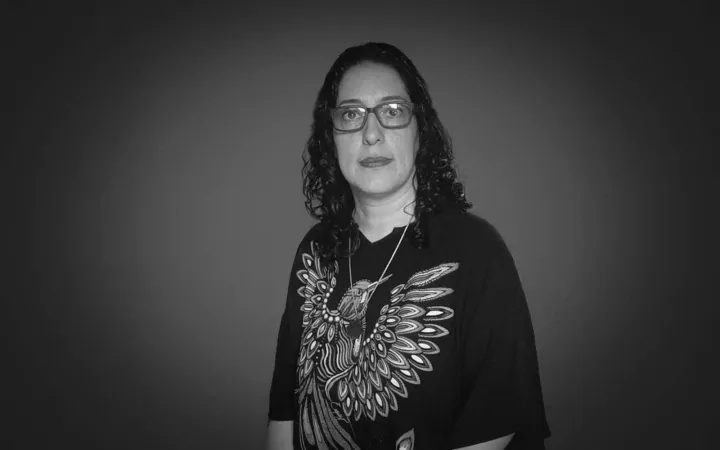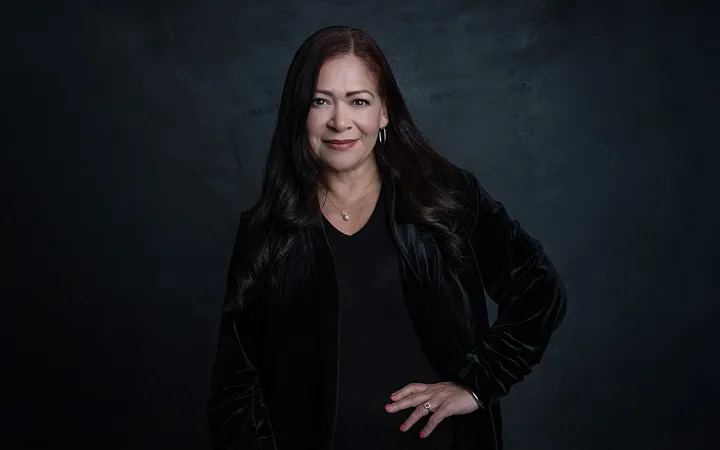
Por Aideé Zamorano
Imposible mantenerse al margen de la fiebre rosa por la película de #Barbie, tengo 39 años y por supuesto que jugué con la icónica muñeca, tuve muchas ediciones favoritas; mi vínculo con ella también retrata el inicio de mi carrera profesional. El primer empleo formal que tuve fue en la agencia de publicidad que llevaba Mattel; en producción trabajé para las adaptaciones de los comerciales al español para América Latina y después estuve en cuentas (quienes tienen contacto directo con las clientas y el equipo creativo). A ese grupo nos decían las Matteletas. Porque sí, cumpliendo con los mandatos de género, todo el equipo estaba conformado por mujeres.
¿Y qué tiene que ver el género con la película de Barbie? Todo. Como bien lo anota el personaje de Sasha, Barbie (desde un análisis feminista) es un agente de socialización del género; claro, ella lo explica de una forma más accesible que las clases y/o libros.
La cinta es fa bu lo sa, un recorrido por los feminismos de las distintas olas. Encontré referencias teóricas de la talla de Judith Butler, Bell Hooks y la propia Angela Davis, quién tal vez estaría fascinada con el personaje de la presidenta en Barbieland, tal vez no. También me pareció escuchar a Marcela Lagarde: “Everybody turn to the Barbie next to you and tell her how much you love her. Compliment her.” - desde los feminismos explicamos este comportamiento como sororidad y fue Lagarde quién acuñó el término en español.
Lloré, reí a carcajadas, aplaudí, canté, grité y bailé mientras veía la cinta de la mano de mi esposo, quién me abrazó cuándo en el cine escuchamos: “Do you guys ever think about dying?” y es que también he sido esa Barbie. Según la Organización Mundial de la Salud cada año se cometen 700,000 suicidios; es decir, 1 de cada 100 muertes. Agradecí infinitamente que la producción haya sido tan vocal sobre esa pandemia silenciosa.
Innumerables veces he tratado de explicar el patriarcado en clases; columnas, publicaciones en redes sociales, y un día llega Ken a hacer todo más fácil: “Why didn’t Barbie tell me about Patriarchy?” y en pantalla enorme, pude ver cómo de manera tan sencilla y multi-millonariamente producida, se explica la reproducción de las relaciones de poder (¿Ya ven? Lo único que me faltaba era el capital; así se ve el patriarcado, el poder de transmitir mensajes lo logran hombres y mujeres dueñas de los medios de producción).
Y sí, entiendo perfecto cuando Gloria piensa en la muerte frente a la cultura organizacional que se refleja en la película: un grupo de hombres blancos heteros en el board ejecutivo. Y ella, como yo, con su poder y fenotipo latino, tratando de ocupar un lugar, luchando siempre de demostrar su valor. “Show your worth, you are not enough” tuve que escucharlo en mi propia producción de Barbie.
Toda la publicidad de la película va en torno a la pareja (que no es pareja) creada por la marca juguetera, y sin duda, el momento cumbre es el monólogo de América Ferrer (el personaje de Gloria - perfectamente bien elegido el nombre ¿no creen?- es un homenaje a la liberación e igualdad que suponen los feminismos), sólo de pensar en esa escena se me pone la piel chinita. Me vi en América de tantas formas que no pude evitar aplaudirle cuando terminó su discurso, todo el tiempo sentí que la película me hablaba a mí, que las Barbie ordinarias existimos y resistimos todos los días frente a este modelo capitalista, sexista y patriarcal.
Que todas las Barbie se llamen igual y que todos los muñecos sean Ken en la película no es un error, es una atinada explicación sobre cómo el patriarcado nos supone una masa homogénea que debemos encajar en el sistema binario, y si no lo hacemos - como Allan- parece que no hay un lugar para nosotras y que debemos vivir a la sombra de los estereotipos de género. “Ken is me” es esa invitación a ocupar un lugar desde la diferencia, la pluralidad y la diversidad como personas.
Planeo ver la película más veces en el cine con un grupo de amigas, con mi mamá y con mi hijo mayor porque para mí, es la cinta que genuinamente ha explicado de manera clara y sencilla las teorías de género y los feminismos; aunque contradictoriamente se encuentra totalmente inmersa en estereotipos, por los colores, la ropa y los cuerpos perfectos de la mayoría del elenco. Aplaudo también la valentía del equipo de Mattel al producir una autocrítica sobre Barbie y la cultura organizacional que viven; lo único que les falló fue reproducir las oficinas, tener junta en la sala de Barbie era como entrar al set de la película. Es muy lógico que la trama se desarrolle en Los Angeles, California. Es en El Segundo, California en donde está el corporativo de Mattel y al que tuve que hablar varias veces para contactar a mis clientes para alguna aprobación.
¿Me pagaron para escribir esta columna? No, sólo reconozco que es una buena producción, es más, para sumar a la autocrítica de Mattel, puedo compartirles que la entrevista más violenta que he soportado en mi carrera Godín, fue en las instalaciones de la marca en Polanco. El director de RRHH (un Luis Vega), me dejó hablando a la mitad de la sesión y me interrumpió en todas mis respuestas; no me sorprendió porque mientras lo esperaba, lo ví llegar y ni siquiera saludó a quienes estábamos en el lobby o al personal que trabajaba en recepción; valiente director de recursos humanos.
Habrá que evidenciar si todo el conocimiento y entendimiento sobre feminismos, el patriarcado y el poder que comunicaron en la película, también es una realidad para la plantilla laboral. Porque como dice América en su monólogo: You have to answer for men’s bad behavior, which is insane, but if you point that out, you’re accused of complaining.
Y así como Barbie, esta generación de mujeres, herederas de las olas de feminismos que nos han antecedido y que hoy enarbolamos nuestras propias luchas, no vamos a pedirle permiso a nadie para hablar de los violentadores en nuestros centros de trabajo.
I’m just so tired of watching myself and every single other woman tie herself into knots so that people will like us.

Las opiniones expresadas son responsabilidad de sus autoras y son absolutamente independientes a la postura y línea editorial de Opinión 51.






Comments ()